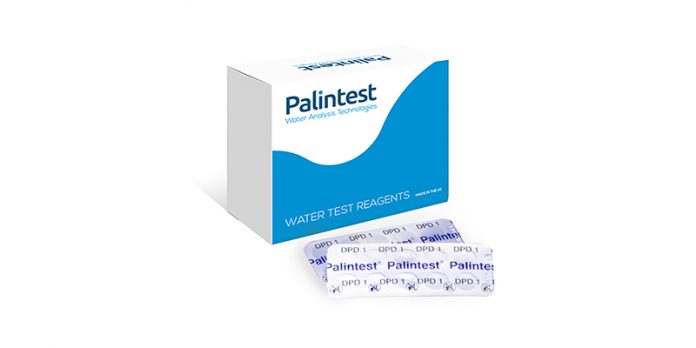DPD continues to be the standard method of chlorine determination throughout the world. Here we review how DPD measurement works and what the options are when measuring chlorine using DPD.
History of DPD Measurement
The DPD colorimetric method is the result of extensive work carried out by Dr Palin in the 1960s to standardise a method for chlorine measurement. Due to the increasing popularity of using chlorination to disinfect drinking water, a simple, reliable method was required to assess chlorine levels in treated water. Dr Palin pioneered the work of breakpoint chlorination for water and the invention of the DPD method for the determination of chlorine.
Dr Palin’s method was adopted worldwide, and DPD is now the most common method for chlorine analysis, as well as a Standard Method (as defined by AWWA/APHA, Method 4500–Cl G), and an ISO method (reference ISO 7393).
How DPD Measurement Works
DPD stands for N,N-diethyl-p-phenylenediamine, and is the name of a colourless compound that will turn a bright pink colour when in the presence of chlorine as well as other oxidising agents.
When DPD reacts with chlorine it is oxidised to form a Würster dye (a compound with a distinct magenta colour), as shown in the reaction scheme below. The solution formed has a distinct magenta colour, and the amount of Würster dye formed is proportional to the amount of free chlorine present.
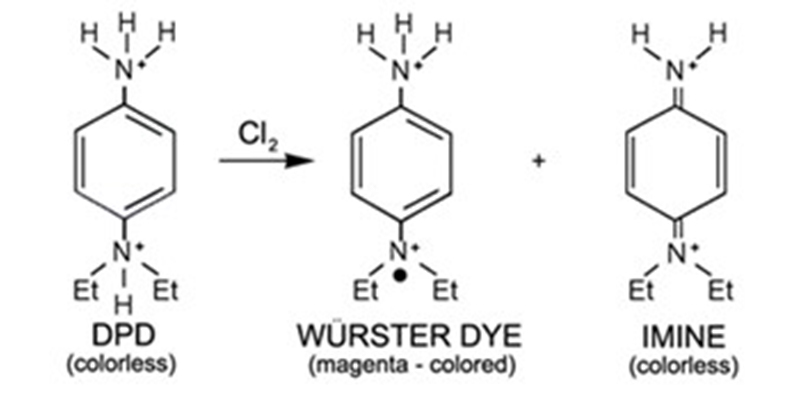
Secondary oxidation of the Würster dye causes a colourless imine product to form. At chlorine levels above the range of the DPD test chosen, the colourless imine will be formed and so the pink colour will start to fade and can even disappear. This is known as the bleaching effect. In these cases, a dilution is required to bring the sample back within the range of the test. The schematic below shows the colour changes seen when using DPD on samples with differing chlorine concentrations.
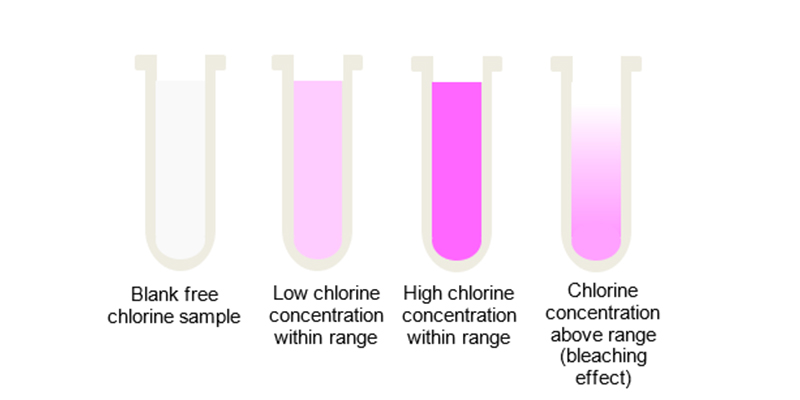
Options for Measuring Chlorine Using DPD
There are both visual and photometric testing options available using DPD reagents. For photometric testing, Palintest offer DPD reagents in the form of tablets or liquids. DPD tablet reagents contain the exact dose of indicator required for the test, and the tablet is added to the sample and crushed to release the indicator. Tablet reagents remain stable for extended periods and do not require refrigeration for storage. However, the reagents do need to be crushed completely to perform the test, and so the use of tablet reagents does increase test time slightly compared to liquid reagents.
There are four main DPD tablets which can be used when measuring chlorine or alternative disinfectants, making chlorine testing easy and convenient:
- DPD 1 measures free available chlorine
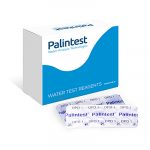
- DPD 2 (use with DPD 1) measures combined chlorine
- DPD 3 (use with DPD 1) measures total chlorine
- DPD 4 measures total available chlorine
DPD liquid reagents are an alternative to DPD tablets. DPD liquids are supplied in dropper bottles and three drops of each reagent are added to the sample to measure chlorine levels. Liquid reagents use a less involved method, but they do require refrigeration for storage, and it can be difficult to get the dosage exactly right. Three different solutions are required for free and total chlorine measurement
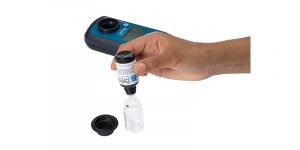
- DPD No 1 Indicator (A)
- DPD No 1 Buffer (B)
- DPD No 3 Solution (C)
Both reagent options can be used to give accurate, reliable results when measuring free and total chlorine.
Palintest’s new Lumiso Chlorine Photometer
Palintest’s new Lumiso photometer range includes Lumiso Chlorine, a brand-new handheld photometer which is compatible with both tablet and liquid DPD reagents, making it suitable for any testing needs. Lumiso Chlorine can measure in the range of 0–5 mg/L for free and total chlorine using DPD or 0–250 mg/L total chlorine using a method based on potassium iodide.
The Lumiso Chlorine photometer also features USB connectivity to allow any updates to be applied in-field. Up to 50 data sets can be stored on the instrument’s memory, and it has a live clock meaning the exact date and time is saved for each measurement, allowing for full traceability for compliance and auditing purposes. The USB connectivity can also be used to transfer data from the instrument to another device to allow for effective data management.
Lumiso Chlorine, like all Lumiso photometers, is a lightweight, handheld instrument designed specifically for field-use. The photometer comes in a hard-case kit, ensuring there is space to store all reagents and accessories and that the instrument is protected during transit. Reagents are purchased separately to the kit, allowing total flexibility with the type of reagent used
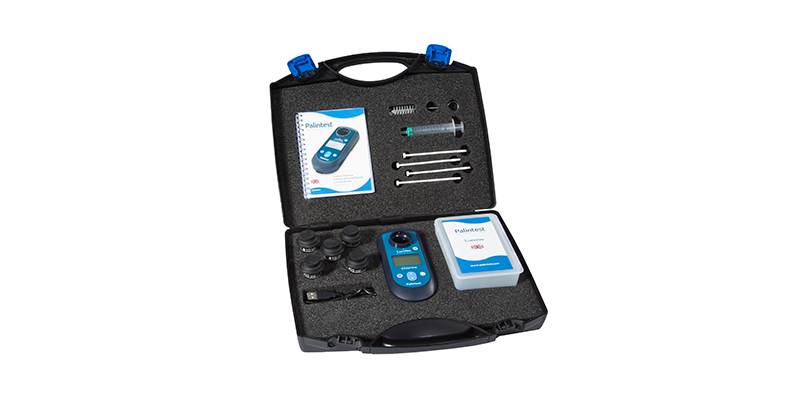
For more information about Lumiso Chlorine or any of our new Lumiso photometer range please contact a member of our team by clicking here



